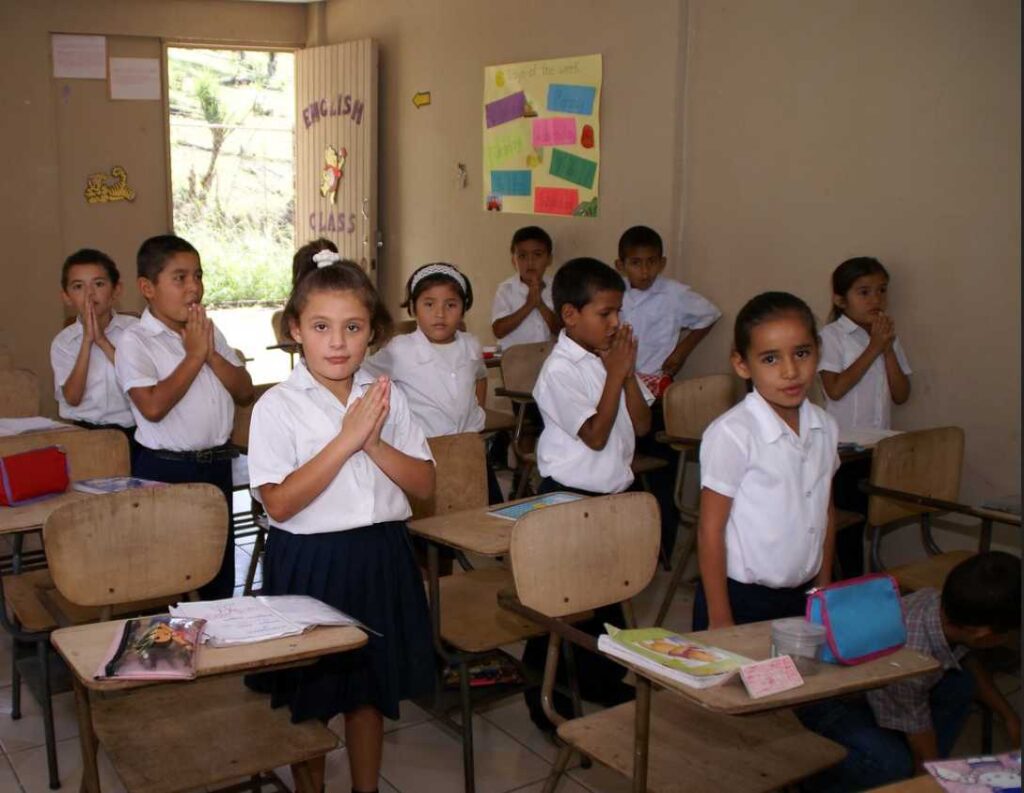In this guide by Explore CR, we’ll delve into the heart of Costa Rica’s education system, a key factor behind the country’s impressive Human Development Index (HDI). We’ll explore the unique aspects that set it apart and how it contributes to the nation’s overall development.
1. The Emphasis on Education in Costa Rica’s Constitution
Costa Rica’s constitution places a significant emphasis on education. It’s not just a right—it’s a priority. The government allocates a whopping 28% of its national budget to education, a commitment that is rare to find worldwide. This investment has led to a literacy rate of over 97%, one of the highest in Latin America.
For instance, in the small town of San Isidro, the local school, despite its limited resources, ensures every child receives quality education. The teachers are dedicated, the parents involved, and the community supportive. It’s a microcosm of the country’s larger commitment to education.
2. The Bilingual Advantage: English Proficiency
Costa Rica’s education system recognizes the importance of English proficiency in today’s globalized world. English is a mandatory subject in schools from an early age. This focus has resulted in a workforce that’s not only educated but also bilingual, making Costa Rica an attractive destination for international businesses.
Take the case of Intel, for example. The tech giant chose Costa Rica as its Latin American base, in part due to the high English proficiency levels among the local population.

3. The Role of Technical and Vocational Education
Technical and vocational education plays a crucial role in Costa Rica’s education system. These programs provide students with practical skills that directly translate into job opportunities, contributing to the country’s low unemployment rate.
The National Learning Institute (INA) is a prime example of this. It offers a wide range of vocational courses, from tourism to technology, providing students with the skills needed to meet the demands of the job market.

4. The Impact on the Human Development Index
The robust education system has had a direct impact on Costa Rica’s HDI. The country ranks highly in terms of life expectancy, education, and per capita income indicators, outperforming many wealthier nations. It’s a testament to the power of education in driving human development.
For instance, Costa Rica’s life expectancy is one of the highest in the world, a fact often attributed to the country’s well-educated population making informed health and lifestyle choices.
FAQ Section
Q1: What is the literacy rate in Costa Rica? A: Costa Rica boasts a literacy rate of over 97%, one of the highest in Latin America.
Q2: Is English taught in Costa Rican schools? A: Yes, English is a mandatory subject in Costa Rican schools, leading to a high level of English proficiency in the country.
Q3: What is the role of vocational education in Costa Rica? A: Vocational education in Costa Rica provides students with practical skills that lead directly to job opportunities, contributing to the country’s low unemployment rate.
Q4: How does the education system impact Costa Rica’s HDI? A: The strong education system contributes to high life expectancy, education, and per capita income indicators, all of which boost Costa Rica’s HDI.
Q5: How much does Costa Rica invest in education? A: Costa Rica invests 28% of its national budget in education, a commitment that is rare to find worldwide.
Conclusion
We’ve explored how Costa Rica’s commitment to education has been a driving force behind its high HDI. From constitutional commitments to English proficiency, vocational training, and the direct impact on human development, it’s clear that education is more than just a right in Costa Rica—it’s a cornerstone of national development.
Sources
For more information, you can visit the following reputable sources:
- UNESCO provides comprehensive data on education systems worldwide, including Costa Rica’s.
- The World Bank offers detailed reports on Costa Rica’s economic and social indicators, including the impact of education on its HDI.
